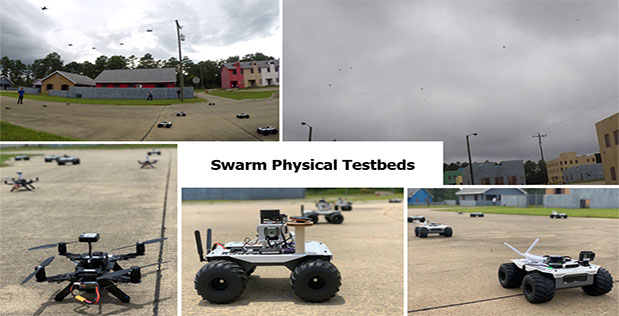
The Defense Advanced Research Projects Agency (DARPA) announced intentions to enhance collective autonomous systems in a way that will support urban troop offensives, and to that end, are seeking proposals for operational swarm tactics and new technologies to integrate into these swarms.
It is all part of the organization’s fifth swarm sprint, under its OFFensive Swarm-Enabled Tactics (OFFSET) program. They want something that will give soldiers better insights on the ground, and so participants will have the opportunity to integrate their tech into one or both of the OFFSET swarm system architectures. From there, they can develop and demonstrate their creations during field testing, with DARPA evaluating. Technologies such as swarm sensors, fielding technologies, and communications approaches are all fair game, among other ideas.
“We’re looking for imaginative proposals for component technologies that, when brought together with our OFFSET physical testbeds, can lead to technological breakthroughs for future swarm capabilities,” Timothy Chung, program manager in DARPA’s Tactical Technology Office, said. “The ability to enhance commercial-off-the-shelf (COTS) air and ground platforms can lead to new modes of swarm operations and disruptive swarm tactics for warfighters.”
Those enhancements could also include new swarm tactics altogether. So long as a notion can be used with a heterogeneous swarm of up to 250 air and ground robots working in tandem across eight square city blocks for hours at a time, DARPA is interested. All proposals are due on Nov. 12, 2019.
Also this week, DARPA awarded contracts for its fourth swarm sprint, for both virtual environment efforts and applications of AI. The former was awarded to the Johns Hopkins University Applied Physics Lab and Michigan Technological University. The AI-focused contracts went to Carnegie Mellon University, Charles River Analytics, Inc., Research Foundation for SUNY at the University of Buffalo, Siemens, Soar Technology, Inc., and Spatial Integrated Systems.




